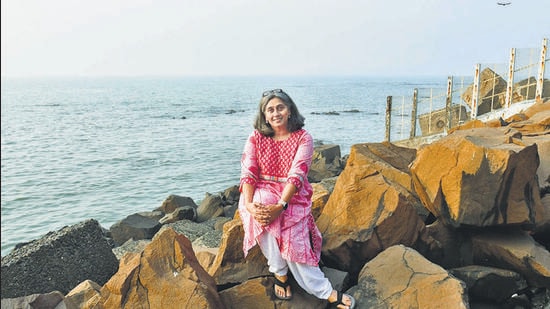This year’s Infosys Science Prize winners extend understanding of the brain and the cosmos
Vaidya won for “fundamental contributions to understanding brain mechanisms that underlie mood disorders such as anxiety and depression, while cosmologist Nissim Kanekar from the Pune-based National Centre for Radio Astrophysics affiliated emerged winner in the category of physical sciences
Mumbai: Growing up, Vidita Vaidya was always interested in animal behaviour. But the 52-year-old neuroscientist is quick to add, “Though not in the wild. I can’t watch a baboon for hours. Studying animals in the wild involves understanding their behaviour in an ecological setting. For me, the laboratory is fixating. Through rodents, I study why we feel fear, stress, joy, and what circuits and molecular pathways in the brain mediates those emotions,” said Vaidya, chairperson, department of biological sciences at the Tata Institute of Fundamental Research (TIFR), Navy Nagar.

On Tuesday – also her birthday – Vaidya was announced as the winner by the Infosys Science Foundation (IFS) in the category of life sciences. Along with her, cosmologist Nissim Kanekar from the Pune-based National Centre for Radio Astrophysics affiliated to TIFR emerged as the winner in the category of physical sciences. The other winners include Suman Chakraborty in engineering and computer science, Sudhir Krishnaswamy in humanities, Mahesh Kakde in mathematical sciences and Rohini Pande in Social Sciences.
Vaidya won for “fundamental contributions to understanding brain mechanisms that underlie mood disorders such as anxiety and depression, including signals engaged by the neurotransmitter serotonin in causing persistent changes in behaviour induced by early life stress and the role of serotonin in energy regulation in brain cells.”
“We work with molecules that are used to treat conditions like depression, anxiety, post-traumatic stress disorder, attention deficit disorder. These molecules are used in drugs, but there is poor understanding on how they work; which neuron in the brain they target and what molecular and cellular changes take place. Our work shows both the positive and negative effects of drugs,” said Vaidya.
Both Vaidya and Kanekar are not new to awards. While Vaidya was conferred the Shanti Swarup Bhatnagar award in medical science in 2015, Kanekar bagged the same award in 2017 in the physical sciences category.
Forty-nine-year-old Kanekar was announced winner for his study of galaxies in an era, the
so-called “high noon” period, in which stars were being formed at a maximum rate. “We measured the average mass of galaxies within 9-8 billion years ago (known as the epoch of peak star formation in the universe) and explain why star formation declined after this epoch. We found that accretion of gas in galaxies was not enough to fuel the increase in star formation rates,” said Kanekar. “Our work gave a better picture of galaxy formation that has the changed the views on evolution of the universe.”
Though he loved cricket as a child, Kanekar interest in astronomy began in class 8 when he read Isaac Asimov’s ‘The Collapsing Universe’. “Like all of his other books, this book about the evolution of stars to black holes was so simply put and well written.”
For Vaidya, the Infosys Prize is a validation of doing science in an environment that is difficult. “Sometimes simple things become tough like placing an order for a mouse. But there is immense joy of doing science in our country because we can shape and train the next generation of scientists and also provide them with role models who are women,” said Vaidya.
“For a 20- year- old, choosing science over something else is an active choice. Young girls who take up a career in life science know they can do it.” Both Kanekar and Vaidya credit their teams for their win. For Kanekar, work would not have been possible without PhD student Aditya Chowdhury, efforts of the Pune-based Gaint Meterwave Radio Telescope (GMRT) engineers, and Govind Swarup who led the team that designed and built the GMRT, with the aim of detecting the hydrogen signal.
“While the award is to the head of the lab, it is a body of work. The prize is recognition for the team, and a validation of their choices,” said Vaidya.
Stay updated with all the Breaking News and Latest News from Mumbai. Click here for comprehensive coverage of top Cities including Bengaluru, Delhi, Hyderabad, and more across India along with Stay informed on the latest happenings in World News.
Stay updated with all the Breaking News and Latest News from Mumbai. Click here for comprehensive coverage of top Cities including Bengaluru, Delhi, Hyderabad, and more across India along with Stay informed on the latest happenings in World News.





